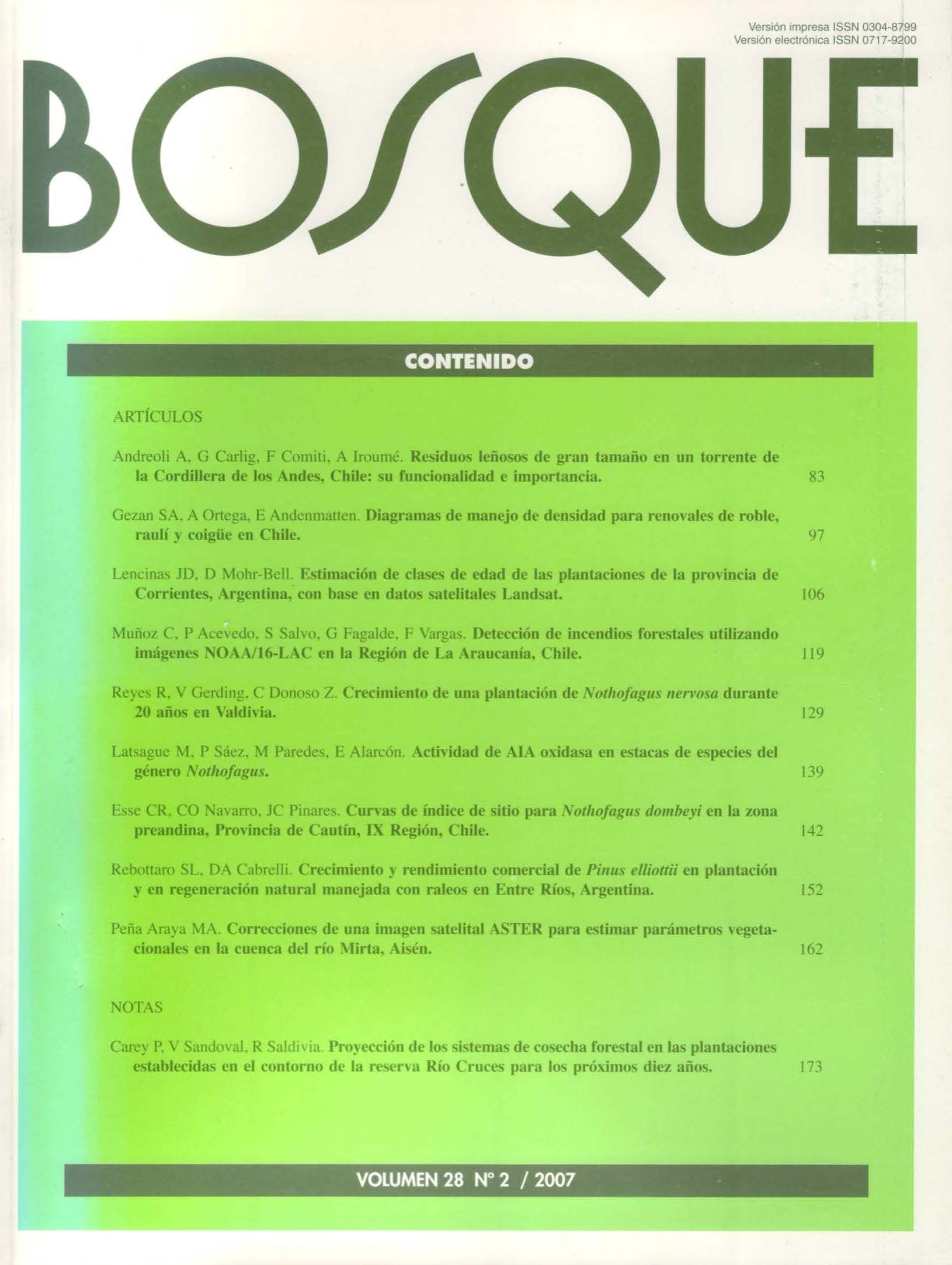Study on large woody debris in a stream from the Andes Mountains: functionality and importance
Main Article Content
Abstract
The study analyzed amounts, characteristics and morphological impact of Large Woody Debris (LWD) in Tres Arroyos torrent of the Chilean Southern Andes draining an old-growth forested basin. All woody debris pieces greater than 10 cm in diameter and 1 m in length were surveyed along a 1.5 km-long stream section presenting a general step-pool/cascade morphology. The total amount of large woody debris within the fluvial corridor was on average 1,500 m3/ha, very high value comparable only to data from old-growth forested basins in the Pacific Northwest of North America. Around two thirds of LWD volume were found in accumulations while half of the LWD elements were located on the active floodplain. As much as 83% of the LWD pieces showed signs of in-stream transport, 13% were directly associated to natural tree falls, and the remaining to landslides and bank erosion. Different types of log-jams were observed, some heavily altering channel morphology (log-steps and valley jams), others just lining the channel edges (bankfull bench jams). The percentage of log-steps over the total number of steps is around 22%, whereas the elevation loss due to LWD (log-steps and valley jams) was 27% the total potential energy. Finally, 2,000 m3 of sediments were estimated to be stored in the main channel behind LWD structures, corresponding to approximately 150% of the annual basin sediment yield.

